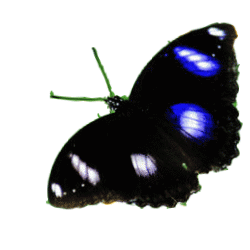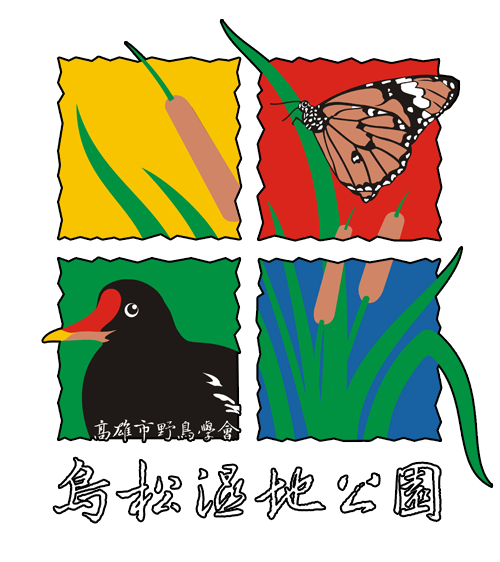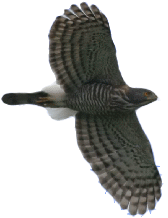Let’s Know Something about Wetlands
There is no definite definition of wetlands so far. According to the common sense, a piece of wetland is a place where there is water and muds. A character of Taiwanese origin pornounced “lung” can cleverly describe “wetland.” The form of this character is “water” on the top and “earth” on the bottom, meaning a piece of wetland has water above earth and earth below water, which can fully express the conception of a piece of wetland. From this we can give a simple definition of “wetland”: an amount of earth with a lot of water or an area of water with a lot of sand can be called “wetland.” A piece of wetland is not always dry, not totally wet, either. Nevertheless, all wetlands have water in or/ and on them to some degree, giving aquatic plants a resource to grow. Judging our surroundings by this definition, we might locate a piece of wetland nearby. Maybe it is a pond, an irrigation ditch, or a riverbank, offering a place for animals and plants to live and breed.
■ Important Eco-systems on the Earth
Wetlands are the most productive eco-systems on the earth. In addition to abundant water for creatures to grow, which is the most important factor, wetlands have advantages such as rich nutrients from the upstreams, enough sunlight, and the pushing force from waves and tides, which makes the wetlands’ total production range from 2,5 to 4 times larger than that of fertile farmlands.
■Functions of Wetlands
- Producing foods: Rice paddies, water chestnut fields, water bamboo fields, taro fields, etc.
- aquaculture: Fish farming, oyster raising, etc.
- Direct water channeling: Gaoping River supplies the great Kaohsiung with fresh water for daily use, and fishermen extract and pump up groundwater to farm fish and shrimps.
- Protecting seashores: Mangrove forests grown in estuarine intertidal areas can resist the erosion of tidal waves, functioning as a bank protector. Salt-tolerant plants on the seashores can stop sea winds with high salinity from blowing into the inlands, so that inland plants won’t get hurt.
- Purifying polluted water: Wetland plants can purify the surrounding waters, filtering and decomposing heavy metals through plants’ roots absorption power and the soil’s buffering power.
- Flood protection: A piece of wetland is like a large bar of natural sponge. When heavy rains come, it can receive the raindrops and direct them to the underground, so that flood scours can be minimized.
- Auxiliary groundwater: In relatively dry seasons, the water absorbed by the wetland will be released slowly.
- Prevention of groundwater salinization: Excessively pumped groundwater by fish culturing marine ponds along the sea areas not only causes fault sags but also gives sea water a chance to seep into the underground wells, making the wells salty. But with fresh water from the wetlands rapidly replenish the underground water resources, the problem of groundwater salinization will be eased, and serious fault sags won’t happen because of excessively pumped groundwater.
- Conserving wild animals and plants: The wetland swamps are rich in nutrients, which can not onlt nurture the plants’ growth but also attract a variety of animals to forage and make a shelter here, forming a specific wetland ecology.
- Providing recreational spots: Wetlands, such as Cheng Ching Lake, Chi Ching Beach, Si Zih Wan Bay, Tainan Wushantou Reservoir, and Taipei Shihmen Reservoir, are also most-visited playgrounds for many people.
■Types of Wetlands
According to the above definition, we find that there are various kinds of wetlands: saltwater wetlands, freshwater wetlands, high altitude wetlands, and low altitude wetlands. We can roughly classify them into the following types:
- Lakes: There are mountain lakes like Tienchi in South Cross-Island Highway and Big Ghost and Little Ghost Lake Wetlands; while there are also low altitude lakes such as Longluantan Natural Center and Nanren Lake.
- Rivers: A river is divided into upstream, midstream, and downstream. They respectively own different eco-systems and house distinctive animals and plants.
- River mouths: Though silts from upstream deposit in river mouths, they also carry organic nutrients with them; on the other hand, with the interactions of saltwater and freshwater and washes of waves and tides, river mouth muds vary greatly in the humidity, with wetting and drying alternatiug. Under this fierce condition, a uinque eco-system is formed.
- Sandy beaches: Many wind-tolerant and sand grasping plants are grown in sandy beaches, like saddle rattans, littoral spinegrasses, and rootless vines.
- Marine culturing ponds: With large bodies of water, marine culturing ponds offer birds, insects, and plants sheltering places to grow strongly.
- Poolponds: Unlike marine culturing ponds, ordinary poolponds are freshwater ponds.
- Rice paddies: Rice paddies are the most often seen types of wetlands in most countries housing various species of birds, insects, and plants.
- Ditches and waterways: Ditches and waterways along rice paddies and at the roadsides are channels for water in it to take in and out almost everything, making the eco-systems change all the time.
- Seashores (with a depth below 6 meters at low tide): With adequate sunshine, there are many species of seaweeds, coral reefs, and other marine creatures grown here.
■Note: In 1975, the International Union for Conservation of Nature (IUCN) categorized wetlands into 22 types.

■Sad Melodies of Wetlands
For a long period of time, the value of wetlands have been neglected. Called “wastelands,” wetlands are thought to be full of filth, breeding all kinds of gnats. As a result, they often serve as sand pumping and filling spots and construction sites and place to dump garbage. With a long history of pollution, excessive exploitation of aquatic resources, carelessly turning wetlands into lands for construction and roads, Taiwan’s wetlands have gradually disappeared, which makes the great Nature to fight back, causing serious loss on lives and properties. For the past few years, experts, scholars, and environmental groups energetically speak out, advocating the importance of wetlands. Their endeavors finally caught the government's attention, forcing the units concerned to plan several reserved areas. Hopefully, with a growing knowledge on wetlands, from now on people won’t do anything to destroy wetlands, giving the following generations a better future.
■An Introduction to Wetlands in Kaohsiung
Besides Niaosong Wetland Park, we still have another 21 wetlands with various sizes in Kaohsiung. According to the wetland classification, we have the following types:
- River-type wetlands: Love River Wetland, Yanshuei Harbor Creek Wetland, Nanzihsiian River Wetland, Linyuan District Ocean Wetland, Dahsu Old Railway Bridge Wetland Park, and Linyuan Manmade Wetland are of this type.
- River- and poolpond-type wetlands: Banping Lake Wetland, Big Ghost Lake Wetland, Shertzilinpi Wetland, Yuanjhong Harbor Wetland, Fongshan Reservoir Wetland, Niaosong Wetland Park, Jhouzai Wetland, Kaohsiung Museum of Fine Art Wetland, Jhongdu Wetland, and Wetland of the National Kaohsiung University are of this type.
- Inland saltmarsh-type wetlands: Jiading Wetland and Yongan Wetland are of this type.
- Detention pond-type wetlands: Po Yie Village Detention Pond Wetland and Ben Hi Village Detention Pond Wetland are of this type.
The above types are the team’s classification. Connect to the following website to get more detailed information about wetlands: http://pwbgis.kcg.gov.tw/wetland/
Source of Information: Adapted from A Photographic Guide of Niaosong Wetland Park and the website of Wetland Corridors, Kaohsiung City Government.



















